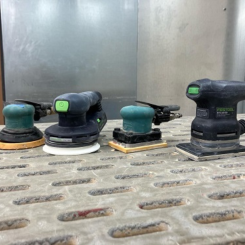Making Productive Choices
17 June, 2019
17 June, 2019

By Danny Kerr
Why is everything so hard?” “It seems like I’m always taking one step forward and two steps back.”
“Maybe I’m just not good enough.”
“Why am I doing what I’m doing?”
When was the last time your brain started this type of internal dialogue? A defeated brain is the most dangerous ingredient when running your own business and will often lead to extreme failure. This happens to all entrepreneurs, including me, but there is something you can do about it.
Growing up I learned two very important things: to work hard and be humble in everything I do. Coming from a modest family, I learned to make my own success in life. Going through school I found out I was dyslexic and was treated differently by my classmates and teachers. As I grew up these experiences fueled a desire in me to prove I could do more. Soon this desire turned into a reality.
After graduating, I started my own painting business employing 12 full-time staff and made enough money to buy my first home. At 20 years old, I took on a position as a general manager for a franchise company and grew sales from $400,000 to $1.3 million in one year. At 28, I have a beautiful wife and baby, own a wealth of real estate and am currently working on building my third multimillion-dollar business.
Now this is all warm and inspiring, but what you’re not seeing are the massive ups and downs I experienced along the way. During this time, I lost my dad to a drug overdose, lost my mom to cancer and spent three years working on a failed business. I worked regular 80-hour weeks, gained 30 pounds, cried regularly and wanted to quit what I was doing. Pretty dismal, huh?
The journey through a new experience is filled with highs and lows. Understanding the stages of your journey can help you rise through the low points.
These are personal and professional challenges that we all have in life but few are willing to publicly talk about it. As a result, we often feel overwhelmed and alone with life’s challenges, wondering, “Why me?” We often end up quitting—right before success happens.
After interviewing more than a thousand people to find out what makes them tick and how they would perform in leadership roles, some patterns became very clear. The number one trait that defines a wellrounded successful life and business was a person’s ability to handle stress while in pursuit of a goal. You see, it’s not what happens to us that defines who we are. It’s the decisions we make after that matter the most.
So what can you do to change the way you handle stress? I have found that the best way to alter the habits that hold you back is to be aware of the process that everyone goes through while making vital decisions. It all stems from something called the Transition Curve.
Every new experience in life brings extreme highs and extreme lows. And an entrepreneur’s job description is to live new experiences. As we learn how to deal with these experiences for the first time our brain screams at us, “run” or “fight” as a way to protect us from this stress. This fight or flight battle is silently happening to you every day, and the choice you make ends up defining your success.
When you are experiencing a Crisis of Meaning, primal fear and reward instincts hijack your brain and prevent you from using your cognitive brain. This may have been a good thing for our ancestors who needed to run from a predator into their cave, but in today’s modern world this often clouds our judgment and leads to destructive decision-making.

At the Crisis of Meaning stage you have a choice to make: do you give up and form a limiting belief? Or do you let your emotions calm down and make an informed, realistic decision on how to proceed?
As a strategic coach I spend much of my time assisting clients to navigate these decisions properly. It’s important to seek a sounding board so you can gain perspective and slowly over time alter your default behavior.
Here is what I advise to help my clients make the right choice:
Let’s revisit the examples discussed above:
Ultimately, through all my ups and downs, I have looked at life in a very simple manner. As long as I can eat, sleep and breathe, life is pretty good.
In today’s modern world, we put too much pressure on living a specific definition of success. I have been through a lot at a young age and I can tell you firsthand that money and fame don’t bring happiness. What brings happiness is being aware of the life you have been given, being humble, and always working hard for what you believe in. Life is meant to be a roller coaster ride, so embrace the highs and the lows as one and life will get much simpler.
Danny Kerr is managing partner of Breakthrough Academy, a trade contractor training program design to help business owners structure their business and anchor it with clear, achievable goals. Kerr can be reached at (800) 875-1704. Learn more at www.btacademy.com.




Add new comment